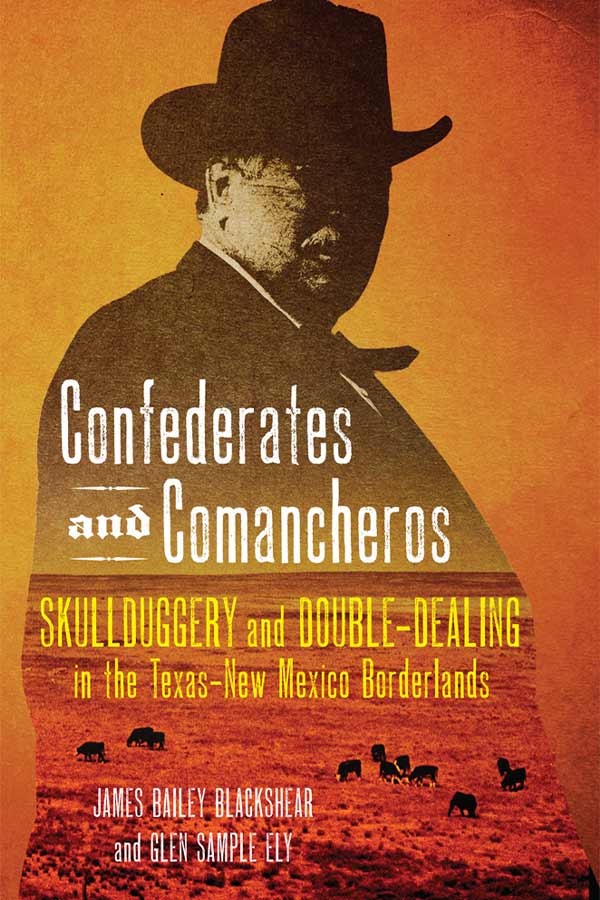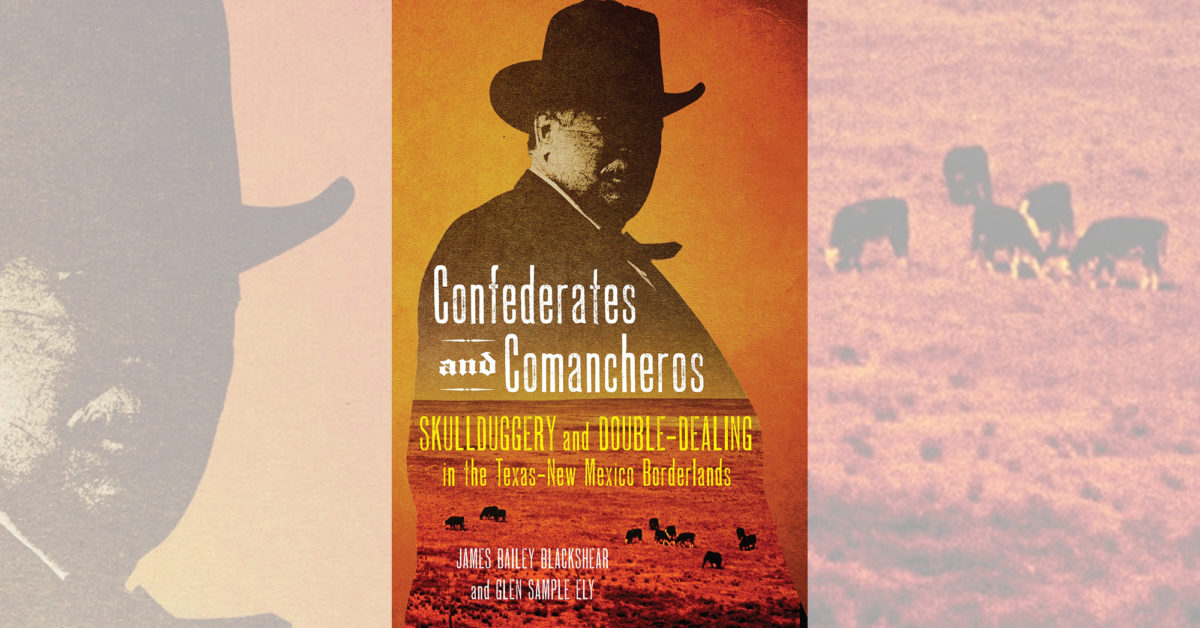Confederates and Comancheros: Skullduggery and Double-Dealing in the Texas–New Mexico Borderlands, by James Bailey Blackshear and Glen Sample Ely, University of Oklahoma Press, Norman, 2021, $32.95
While the American Civil War may have been a simple conflict of blue against gray in the Eastern and Western theaters of operation, the trans-Mississippi West spanned a range of more complicated shades. In Confederates and Comancheros Texans James Blackshear and Glen Ely combine their research to focus on the borderlands between Union-controlled New Mexico Territory and the Confederate state of Texas—to be more specific, the roughly 1,800-square-mile area between the Rio Grande and the Canadian River, encompassing the Pecos River and the Llano Estacado (Staked Plains), where few other than Comanches and Kiowas dared venture.
Adding another wild card to the deck was Mexico, caught up in a war of its own between Austrian-born Emperor Maximilian’s backers and Mexican republicans under Benito Juárez. Amid these contending sides, exploiting the chaos to steal from or trade with any and all parties, were bands of freebooters known as the Comancheros.
In the wake of Confederate Brig. Gen. Henry Hopkins Sibley’s failed 1862 invasion of New Mexico Territory, Union Brig. Gen. James Henry Carleton arrived in force that August to place New Mexico Territory and Texas’ trans-Pecos under martial law. Although the territory’s predominately Mexican-American population had already had their fill of Texan invasions since 1841, there remained enough secessionist sympathizers to aid such Rebel spies as the aptly named Henry Skillman from reconnoitering both sides of the border despite Union efforts to catch him, all in hoped-for preparation of a renewed Texan effort that never materialized. Military activity in the territory centered on skirmishes with the Indians and pursuit of the Comancheros, both of whom found their most profitable currency in the cattle drives they raided—the Comancheros often adding to their beef stock through trade with the Indians in firearms and goods.
Perhaps the biggest surprise Confederates and Comancheros has to offer is a list of Comancheros, their employees and bondholders, revealing that these “renegade” bands, when not stealing, rustling or kidnapping, were fencing their ill-gotten goods to buyers on either side the Pecos. The Comancheros were engaging so broadly in such activity, both on and off the books, as to make them an integral part of the regional economy. Changing times finally caught up with them, however, with the defeats of the Confederacy in 1865 and lingering Indian resistance in the late 1870s. By the 1880s Quahadi Comanche war chief Quanah Parker was a cattle baron himself, siding with New Mexican authorities and the revamped Texas Rangers in shutting down the Comancheros for good.
—Jon Guttman

Confederates and comancheros
Skullduggery and Double-Dealing in the Texas–New Mexico Borderlands
By James Bailey Blackshear and Glen Sample Ely
This post contains affiliate links. If you buy something through our site, we might earn a commission.





